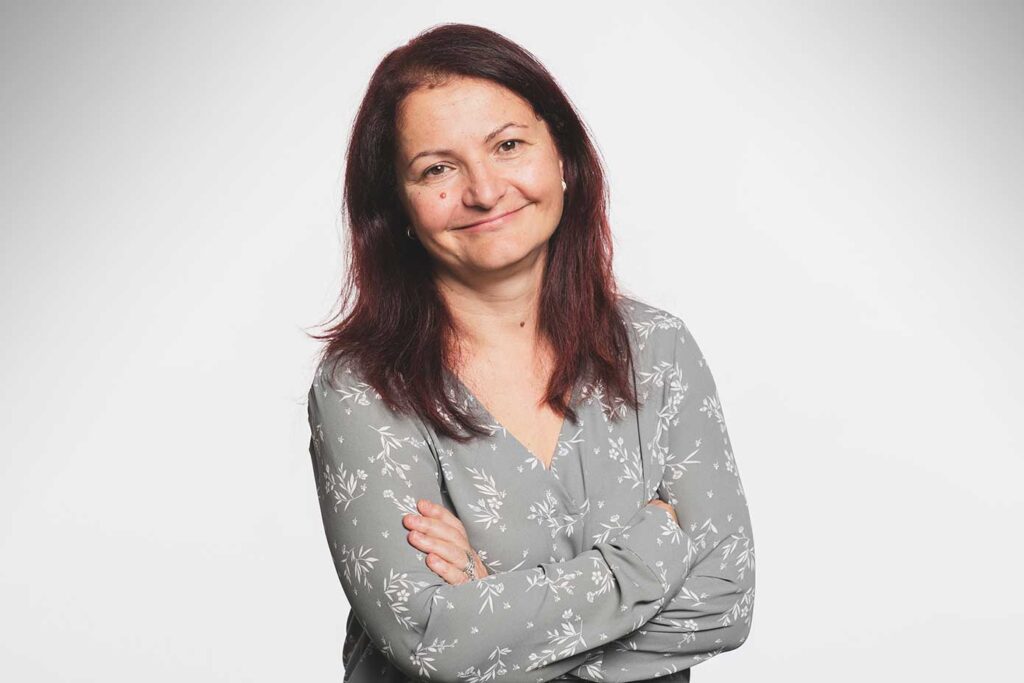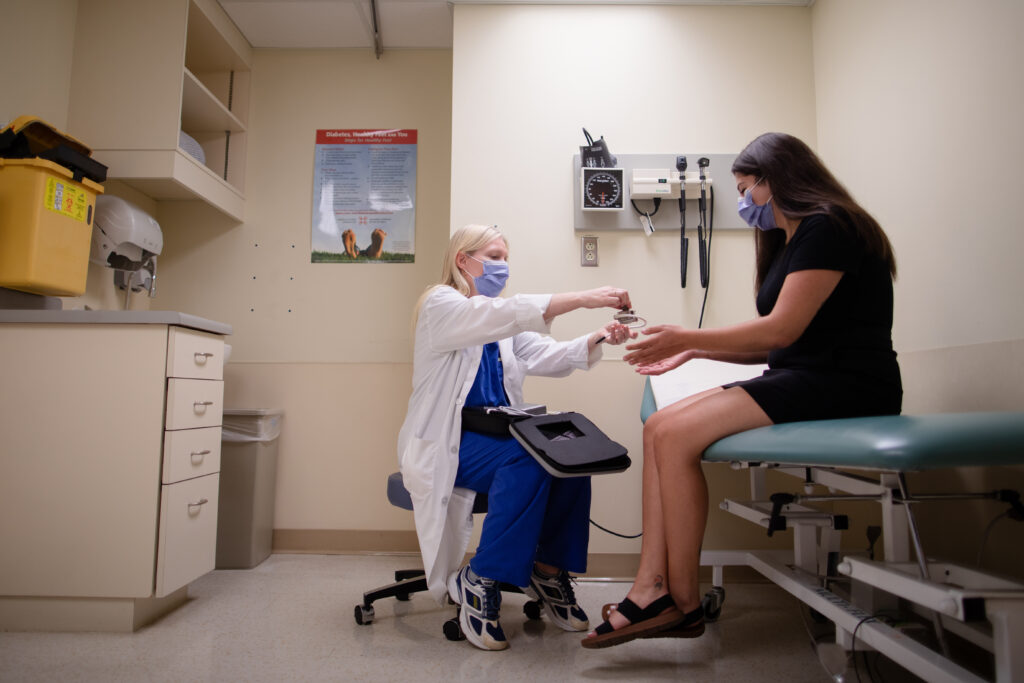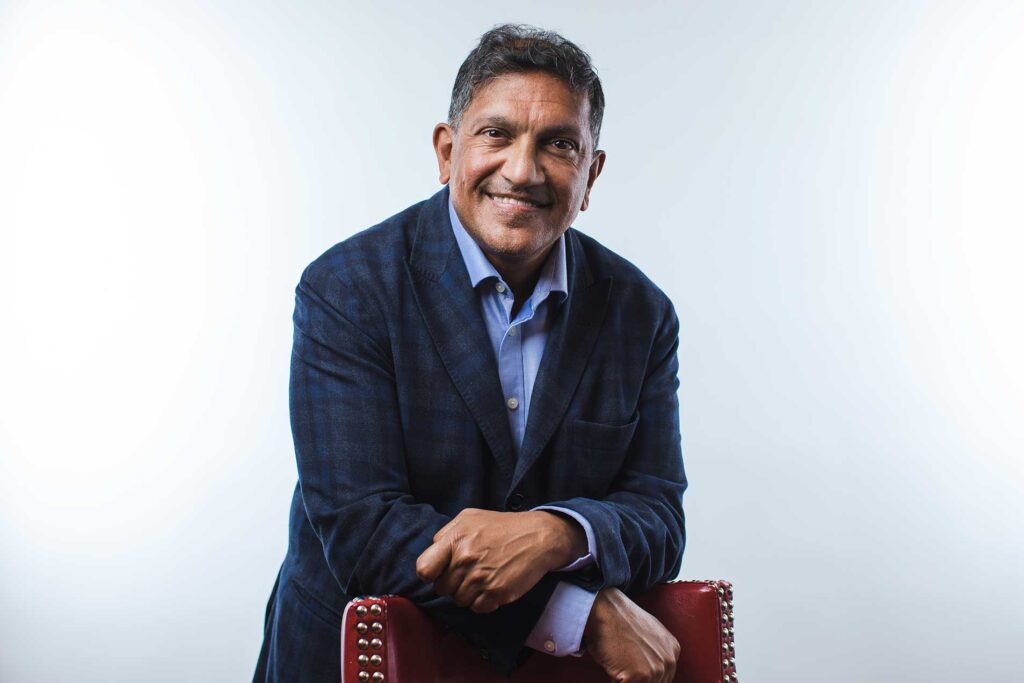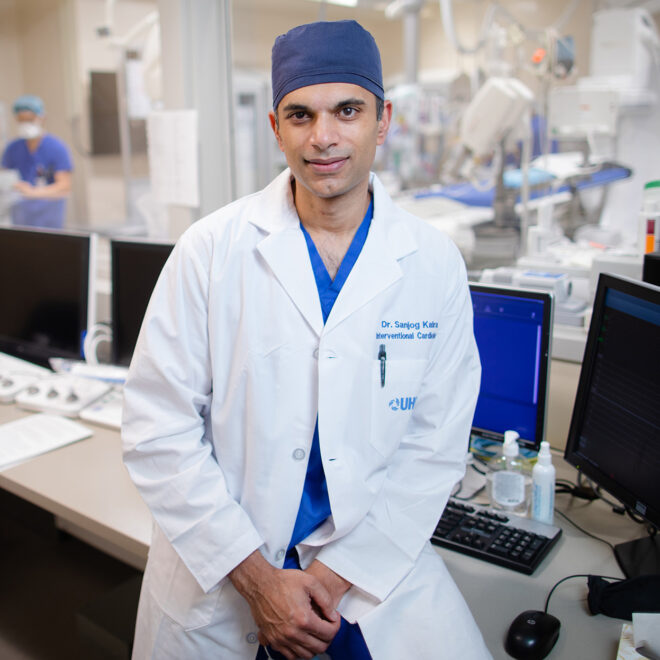How artificial hearts are replacing failing ones
The Peter Munk Cardiac Centre team has demonstrated the benefits of the ventricular assist device for their patients. Now, technology advances and leading-edge research will continue to bring mechanical hearts to new heights.
Each night, Ralph Pichler plugs his mechanical heart into the electrical socket in the wall – a new routine he’s been following for almost a year. The former Swiss Olympic bobsledder was diagnosed with advanced heart failure during a routine visit to University Health Network’s Peter Munk Cardiac Centre and was admitted right away to be assessed for the implantation of a ventricular assist device (VAD).
Incredibly fit and active for a man in his late 60s, Pichler, a former world champion bobsledder, was shocked to learn that he had left ventricular failure and was not a candidate for a heart transplant. “Learning my only options were a mechanical heart or palliative care was brutal news, but I was relieved knowing I was in the right place and I was going to receive the best care,” Pichler remembers.

A VAD is a mechanical pump used to increase the amount of blood that flows through the body. Implanted directly into the heart, the device is attached by an electrical wire to an external battery – or an electrical outlet – and a palm-sized computerized controller via an incision in the chest. The battery can power the pump for up to 18 hours, giving patients the freedom to lead active lives.
100
The number of patients philanthropy funded to receive a VAD.
Life-saving support
The Mechanical Circulatory Support Program at the Peter Munk Cardiac Centre began implanting patients with VADs in 2001. Today, it is the largest and most diverse clinical program of its kind in Canada.
“I was relieved knowing I was in the right place and I was going to receive the best care.”
Ralph Pichler
“Philanthropy funded our first hundred patients to receive a VAD,” says Dr. Phyllis Billia, Medical Director of the Mechanical Circulatory Support Program and Research Director of the Peter Munk Cardiac Centre. Until 2016, the government covered the cost of the devices only as a bridge for patients waiting for a heart transplant. Based on the excellent results from those first hundred patients, the team was able to demonstrate the benefits of mechanical hearts for longer duration of support and potentially as “destination therapy” – that is, as a long-term treatment for end-stage heart failure – which led to ongoing funding from the Ministry of Health.

To bring everything together into one institution […] is truly what sets us apart.
Dr. Vivek Rao
For some people with severe heart failure, a mechanical heart can improve their condition until they can be considered for a heart transplant. For patients like Pichler – whose only other option was palliative care – the device offers them longer, better lives.
“We have patients who have been able to enjoy life for nearly a decade with a VAD,” says nurse practitioner Marnie Rodger, who has been supporting patients with a mechanical heart since the program first opened at the Peter Munk Cardiac Centre. “Those are years in which they saw their children get married and their grandchildren born.”
“We have patients who have been able to enjoy life for nearly a decade with a VAD.”
Marnie Rodgers
Dr. Vivek Rao, Surgical Director of the Mechanical Circulatory Support Program, recalls a particular patient, a man in his seventies who was not a candidate for a heart transplant because he had significant comorbidities, including kidney failure and a suspicious mass on his colon. “Once we implanted the VAD, his heart rhythm regulated, his kidney function improved and we had time to determine that the mass on his colon was benign. Instead of dying within two months, he has been with us three years and counting.”
Since his surgery, Pichler has resumed many of his regular activities, including exercising every day on a stationary bike, walking and gardening. Pichler and his wife Marla are generous in their praise for the team approach at Peter Munk Cardiac Centre, which saw them cared for by a network of professionals all under one roof. They describe Dr. Rao as a miracle worker; Marnie Rodger as an amazing go-to person for any questions or concerns; and Dr. Billia as a caring physician who immediately inspired their confidence.
“Our team leaves no stone unturned to ensure we have […] the best intervention for each individual.”
Dr. Phyllis Billia
200 grams
The size of a VAD, considerably smaller than earlier versions that were 1.2 kilograms, and the external batteries now have double the lasting power of earlier models.
“We will forever be grateful to the unbelievable team who supported us every step of the way,” says Marla Pichler.
Both Drs. Rao and Billia agree that the key to the program’s success is the team’s collaborative, multidisciplinary approach. Weekly meetings occur to discuss the best options for each patient including a cross-pollination of specialists from surgery, heart failure medicine, nephrology, anesthesiology, intensive care, nursing and social work.
“Together, we are able to make quick decisions about how to help patients survive,” says Dr. Billia. “Our team leaves no stone unturned to ensure we have the correct diagnosis and the best intervention for each individual, and that they have all the support they need.”
Evolving technology, improving outcomes
Over the past two decades, mechanical heart support technology has advanced significantly. Not only are the current implantable pumps considerably smaller than earlier versions – 200 grams compared to 1.2 kilograms – the external batteries now have double the lasting power of earlier models. The goal for future iterations is to become even smaller and completely implantable, with batteries that can be charged wirelessly.

“We are about five to 10 years away from that,” says Dr. Billia, adding that she hopes the Peter Munk Cardiac Centre can conduct the first in-human studies when that future becomes a reality. She also wants to see mechanical hearts evolve to be able to communicate with defibrillators and respond to patients’ activity levels.
“This is leading-edge research, and we don’t know where the ceiling is.”
Dr. Vivek Rao
Looking to the future, researchers at the Peter Munk Cardiac Centre are turning to new questions: Why does a heart fail in the first place? Why are some patients more predisposed to post-VAD complications, such as stroke? Can earlier intervention with a mechanical heart benefit people before they reach end-stage heart disease?
“The answers to these questions will have a dramatic impact for a lot of people,” says Dr. Rao. “This is leading-edge research, and we don’t know where the ceiling is.”

